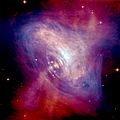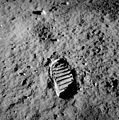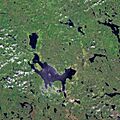Thomas Gold facts for kids
Quick facts for kids
Thomas Gold
|
|
|---|---|
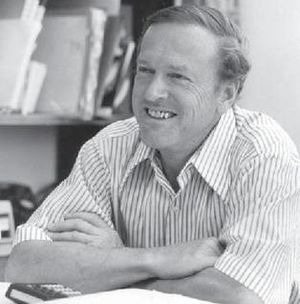 |
|
| Born | May 22, 1920 |
| Died | June 22, 2004 (aged 84) |
| Nationality | Austrian British American |
| Alma mater | Trinity College, Cambridge |
| Known for | Steady-state theory Abiogenic petroleum origin Deep hot biosphere Otoacoustic emission Nanoflare Gold effect |
| Awards | Fellow of the Royal Society (1964) John Frederick Lewis Award (1972) Humboldt Prize (1979) Gold Medal of the Royal Astronomical Society (1985) |
| Scientific career | |
| Fields | Astrophysics, astronomy, biophysics, cosmology, geophysics, aerospace engineering |
| Institutions | University of Cambridge, Royal Observatory, Greenwich, Harvard University, Cornell University |
| Doctoral advisor | R. J. Pumphrey |
| Doctoral students | Stanton J. Peale Peter Goldreich |
Thomas Gold (May 22, 1920 – June 22, 2004) was a very smart scientist. He was born in Austria and later became an American astrophysicist. He taught astronomy at Cornell University. Gold was also a member of important science groups like the U.S. National Academy of Sciences.
In 1948, Gold and two other young scientists from Cambridge suggested a new idea about the universe. It was called the "steady state" hypothesis. This idea is not widely accepted today. Gold's work covered many different science areas. These included biophysics, astronomy, aerospace engineering, and geophysics.
Contents
Early Life and Education
Thomas Gold was born on May 22, 1920, in Vienna, Austria. His father, Max Gold, owned a large mining company. His mother, Josefine Martin, was a former actress. In the late 1920s, his family moved to Berlin. This was because the mining industry was struggling.
In 1933, his family left Germany. This was due to the difficult times for Jewish people. They traveled around Europe for a few years. Gold went to a boarding school in Switzerland. He was very smart and competitive. In 1938, he moved to England with his family. This happened after Germany invaded Austria.
Gold started studying mechanical sciences at Trinity College, Cambridge in 1939. In 1940, the British government sent him to an internment camp. This was because he was from a country that was at war with Britain. There, he met Hermann Bondi, who became a close friend.
Gold spent about 15 months in a camp in Canada. Then he returned to England and went back to Cambridge. He changed his studies to physics. After graduating in 1942, he worked on naval research. He helped with radar systems. He figured out how landing craft could use radar on D-Day. He also found that German U-boats had snorkels. This let them operate underwater.
Work at Cambridge University
After the war, Gold worked at Cambridge's Cavendish Laboratory. He helped build a large magnetron. This device makes strong microwaves for radar. Later, he studied how resonance affects the human ear.
In 1948, Gold suggested that the ear works by "regeneration". This means the ear uses electrical energy to help it hear better. Many ear specialists did not believe him at first. But in the 1970s, scientists found that Gold was right. The ear has tiny hair cells that use a feedback system.
The Steady-State Theory
Gold, Fred Hoyle, and Hermann Bondi started talking about problems in physics. They wondered about redshift and Hubble's law. This made them question the Big Bang theory. The Big Bang theory says the universe started from a very hot, dense state. It then expanded and is still expanding.
Gold thought that new matter was always being created. He believed the universe could be in a "steady state." This means it would always look the same, even as it expanded. New matter would appear as fast as old matter moved away.
In 1948, Gold and Bondi published a paper about the "steady-state theory." They said the universe always looks the same. It has no beginning and no end. They proposed the perfect cosmological principle. This means the universe is the same everywhere and at all times. They thought hydrogen atoms were created from nothing. This would keep the universe's density constant as it grew.
In the 1960s, problems with the steady-state theory appeared. Scientists found quasars and radio galaxies only far away. This meant they existed only in the distant past. The Big Bang theory predicted this. But the steady-state theory said they should be everywhere.
The steady-state theory was mostly disproven in 1965. This happened when scientists found the cosmic microwave background radiation. This radiation was predicted by the Big Bang theory. Stephen Hawking said this discovery was "the final nail in the coffin" for the steady-state theory. Bondi agreed the theory was disproven. But Hoyle and Gold took longer to be convinced.
Accidental Panspermia
Gold also had an interesting idea about how life started on Earth. He called it the "garbage theory." He thought life might have come from waste products. These products could have been accidentally left on Earth by extraterrestrials a long time ago. This idea is a type of panspermia.
Astrophysics Research
In 1951, Gold suggested that new radio signals from space came from outside our Milky Way galaxy. Other scientists disagreed at first. But a year later, a distant source was found. Gold's idea was proven correct.
In 1952, Gold moved to the Royal Greenwich Observatory in England. He suggested that charged particles from the Sun cause magnetic storms on Earth. This happens when they interact with Earth's magnetic field. This idea was also debated. But in 1957, American scientists proved Gold's theory was right.
Gold moved to the United States in 1956. He became a professor at Harvard University. In 1959, he joined Cornell University. He helped set up a new research center there. Cornell became a top place for scientific research. Gold hired famous astronomers like Carl Sagan and Frank Drake. He also helped build the world's largest radio telescope at the Arecibo Observatory in Puerto Rico.
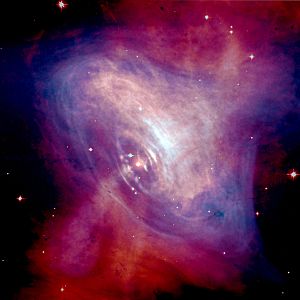
In 1959, Gold also created the term "magnetosphere." This describes the area around Earth where its magnetic field controls the movement of gases and charged particles. In 1960, he worked with Fred Hoyle again. They showed that magnetic energy powers solar flares.
In 1968, scientists discovered a pulsar. This was a radio source that pulsed very regularly. Gold suggested these were fast-spinning neutron stars. He thought their strong magnetic fields and speed made them emit radiation like a rotating light. Many scientists did not like Gold's idea at first. But his theory became widely accepted. This happened after a pulsar was found in the Crab Nebula. Gold's discovery helped lead to new research, including Stephen Hawking's work on black holes.
Relationship with NASA

From the 1950s, Gold worked as a consultant for NASA. He was on several space committees. In 1955, he predicted that the Moon's surface was covered in fine rock powder. This was from space debris hitting it. People jokingly called this "Gold dust."
Gold first thought astronauts would sink deep into the dust. But later, he figured they would only sink a few centimeters. NASA sent unmanned Surveyors to check the Moon's surface. Gold was made fun of by some scientists for his idea. But when the Apollo 11 crew landed on the Moon in 1969, they found the soil was indeed powdery. Gold said this matched his idea. He also helped the Apollo program by designing a special camera for the Moon missions.
In the 1970s and 1980s, Gold openly criticized NASA's Space Shuttle program. He said NASA's claims about many missions and low costs were wrong. NASA officials warned him not to speak to Congress. But Gold ignored them and testified. After this, NASA made it harder for him to get funding for his research.
Origins of Petroleum
Gold became interested in how petroleum formed in the 1950s. He believed it formed deep within the Earth, not just from dead plants and animals. This is called the abiogenic theory.
In the late 1970s, Gold revisited his work on petroleum. Scientists found thriving life around hydrothermal vents on the ocean floor. These creatures lived off heat-loving microbes. This made Gold rethink how petroleum formed.
He thought that earthquakes could create cracks in the ground. These cracks would let methane gas travel from deep inside Earth to the surface. Gold and a colleague made a map. It showed that major oil regions were often near earthquake areas. This suggested gases moved up through the ground.
Gold believed that petroleum was present throughout the universe. So, he thought it didn't have to come from biology on Earth. He proposed that fuels were trapped inside Earth's core billions of years ago. The extreme heat would push them up through porous rocks. As they moved up, these hydrocarbons would feed huge groups of microbes. These microbes could be the basis for life on Earth.
Gold's ideas were met with mixed reactions. Some scientists accused him of copying ideas from Soviet geologists. But Gold always gave credit to the Soviet work once he learned about it.
Drilling in Siljan
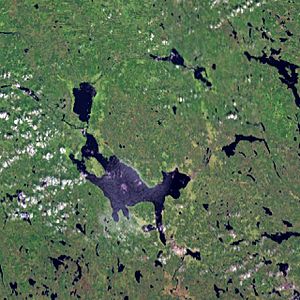
In 1986, Gold started testing his theory. He drilled a deep hole near Lake Siljan in Sweden. This area had a large meteor crater. Gold thought the crater would have made cracks deep enough for methane to rise from the mantle.
In 1987, a lot of drilling lubricant disappeared into the ground. Gold thought it fell into a methane reservoir. Soon after, they found black oily sludge. Gold claimed it contained oil and ancient bacteria. He said this showed life existed much deeper than thought. He believed it challenged the idea that oil only comes from biological material.
Many scientists were skeptical. They thought the sludge might be contamination from the drilling. Gold disagreed. He believed the oil and gas could easily move up to the surface. He stopped the first drilling project. He then started a second hole with a different lubricant.
In 1989, the drill found oil. It wasn't a lot, but it showed oil was there. The drill had technical problems and stopped. A second hole was drilled. By 1991, it also found oil. But many skeptics were still not convinced. Some thought the oil was just contamination from the drilling process.
The Deep Hot Biosphere
In a 1992 paper, Gold suggested that tiny life forms exist deep inside Earth's crust. He called this "The Deep, Hot Biosphere." These microbes get energy from chemicals, not sunlight. He thought this deep life might be as much as all life on the surface. Gold also believed this kind of life could be common on other planets and moons.
A 1993 article in The New York Times brought Gold's idea to public attention. It said that new microbes found deep in Earth hinted at a huge hidden world of life. This discovery could change science textbooks.
Gold published a book called The Deep Hot Biosphere in 1999. He explained his ideas further. He said that bacteria feeding on oil could explain why oil has biological material. This would mean oil is not just from dead organisms. He also coined the term "surface chauvinism." This means scientists often only look for life on the surface of planets.
Freeman Dyson, a famous physicist, wrote the foreword to Gold's book. He said Gold's theories were "always original, always important, usually controversial — and usually right."
Academic Legacy
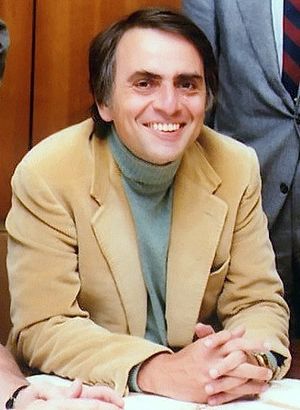
Thomas Gold received many honors during his career. He was a Fellow of the Royal Astronomical Society and the Royal Society. He was also a member of the United States National Academy of Sciences. He won several awards, including the prestigious Gold Medal of the Royal Astronomical Society in 1985. This award has been given to famous scientists like Edwin Hubble and Albert Einstein. Gold did not earn a doctorate degree, but he received an honorary one from Cambridge University.
Many scientists praised Gold. Astrophysicists Geoffrey and Margaret Burbidge called him "one of the outstanding physicists of his time." Freeman Dyson said Gold's theories were "original, important, controversial — and usually right."
Hermann Bondi said Gold was a "singular scientist." He would step into any field where he thought an idea was missed. He relied on his deep understanding of physics. Stanley F. Dermott called Gold a "scientific maverick." He challenged old ideas and often found them wrong. Anthony Tucker said Gold would "dive into new territory to open up problems unseen by others."
However, some geologists strongly disagreed with Gold's abiogenic petroleum theory. They even tried to stop him from publishing his findings.
Personal Life
Gold married his first wife, Merle Eleanor Tuberg, in 1947. She was an American astrophysicist. They had three daughters: Linda, Lucy, and Tanya. After they divorced, Gold married Carvel Lee Beyer in 1972. They had one daughter, Lauren.
Thomas Gold passed away at age 84 in Ithaca, New York. He died from heart problems. He was survived by his wife, four daughters, and six grandchildren.
See also
 In Spanish: Thomas Gold para niños
In Spanish: Thomas Gold para niños
- Abiogenic petroleum origin
- Gold universe
- Astronomy
- Astrophysics
- Petroleum
- Theoretical astrophysics
Images for kids




